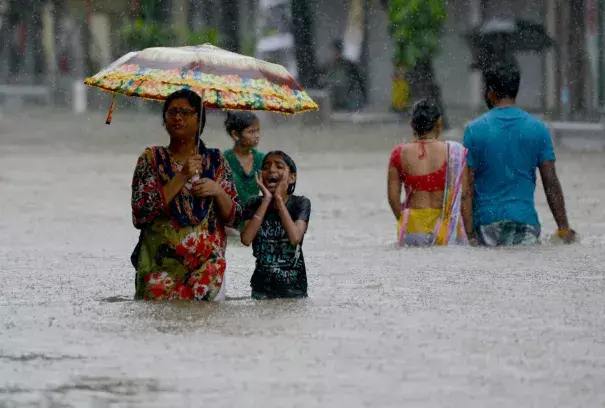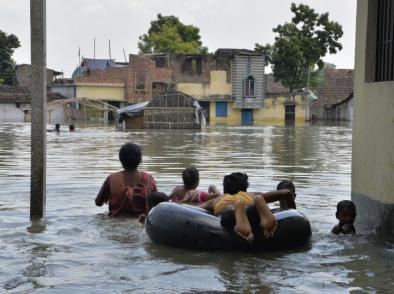How Climate Change Contributed to Massive Floods in South Asia

Across Nepal, Bangladesh, and India, an exceptionally strong monsoon season has left almost 1,200 dead and displaced or affected tens of millions more. Heavy rains led to unprecedented landslides and floods—as much as a third of Bangladesh is under water—leaving communities cut off as they face food and fresh water shortages and disease threats that will remain long after the water recedes.
"This is not normal," Reaz Ahmed, the director-general of Bangladesh's Department of Disaster Management, told CNN. "Floods this year were bigger and more intense than the previous years."
Climate change appears to be intensifying the region's monsoon rains. Rising sea surface temperatures in South Asia, for example, led to more moisture in the atmosphere, providing this year's monsoon with its ammunition for torrential rainfall—much the same way abnormally high water temperatures in the Gulf of Mexico intensified Harvey before it stalled over Texas.
Warmer air temperatures in high latitude regions of the globe have also increased glacier melt, which has, in turn, raised the Himalayan rivers' water levels and heightened the risk of flooding. That flooding has proven very costly; some 500 million people live within the flood plains of the Ganges and Brahmaputra rivers in India and Bangladesh.
Related Content






